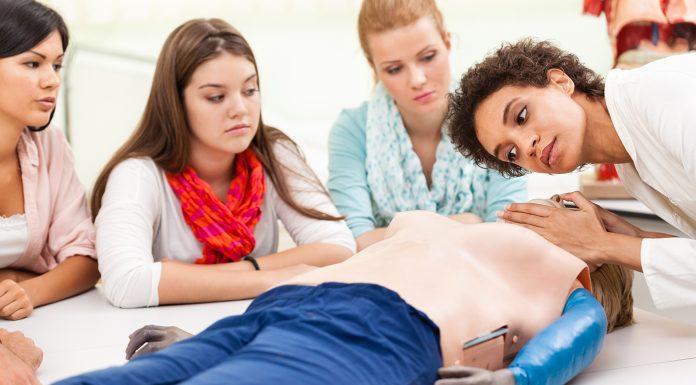“This is the highest number of nursing graduates known to be employed in March in recent years and 84 more than NETS reported in March 2014,” says Ministry of Health chief nurse Jane O’Malley.
The annual graduate destination survey organised by NETS (Nursing Education in the Tertiary sector) showed that 930 of 1192 graduates surveyed in March were working as registered nurses.
The survey data did not include Auckland University of Technology (AUT) graduates but Ministry of Health data shows that 74 of the 104 AUT graduates had been placed in new graduate programmes bringing the total number of November graduate nurses in in work by March up to 1004 – a recent record.
The positive trend was partly due to a plateauing of students sitting state finals, which peaked at 1323 in November 2013 and dropped slightly to 1277 last year. But the employment rate is still considerably up on the 909 (69 per cent) reporting working as nurses at the same time in last year’s destination survey.
As of mid-March there were 273 November nursing graduates not known to be working. The NETS survey indicated that 28 of those were not looking for nursing work currently, at least 162 were actively seeking work and there was no survey data for the remaining 83. (See related story about new graduates seeking working in categories still open to migrant nurses).
O’Malley said the employment market for new graduates remains competitive but there was an upswing in graduates finding jobs earlier than in previous years. She believed the higher employment rate was largely due to district health boards choosing to replace a greater proportion of their nursing workforce with new graduate nurses.
Ministry statistics show that 798 graduates had been placed in government-subsidised NETP (nursing entry to practice) or NESP (mental health) new graduate programmes in public hospitals or publicly funded health sectors. The most common placement was in public health hospital medical (142) or surgical (153) wards followed by mental health and addictions (116) and perioperative (57).
In the non-DHB sector the highest number of graduates found work in primary health care with 62 working in areas including practice nursing, iwi providers and hospices and the residential aged care sector had provided at least 21 NETP places for graduates.
The NETS survey also picked up nurses working in non-NETP programmes in areas like private surgical hospitals, fertility clinics and two graduates nurses working in registered nurse/health care assistant roles in residential aged care.
Cathy Andrew, head of Christchurch’s CPIT nursing school and NETS spokesperson believed this year’s survey results showing 80 per cent employment by mid-March was an “optimistic trend”.
“I think it’s also reflective of the huge amount of effort that has gone into addressing this. Having learnt from the lessons of the past when new graduates haven’t got jobs and they have been lost from nursing and there’s been a crisis a few years later. So there have been initiatives throughout the country where the health sector has gone to significant lengths to make sure they do have vacancies for new nurses.”
She said graduate numbers had increased this decade as nursing schools deliberately increased intakes because of concerns about long-term nursing shortages but schools had plateaued intakes when jobs got a lot tighter around 2012. Andrew also said her own school had noticed a decline in interest in nursing with a hundred less applications for its New Year intake.
The survey also showed fewer graduate nurses heading overseas for work which is part of a consistent trend with graduates nursing overseas falling from 38 in 2013, 24 in 2014 and down to just 12 in 2015.
How many November graduates were still actively seeking work in May would be known presently as applications have just closed for mid-year NETP programme intakes.
Andrew said of the 42 international graduates (that are ineligible for NETP places as they are not New Zealand residents) about half had found work in New Zealand as registered nurses in sectors like residential aged care.





















